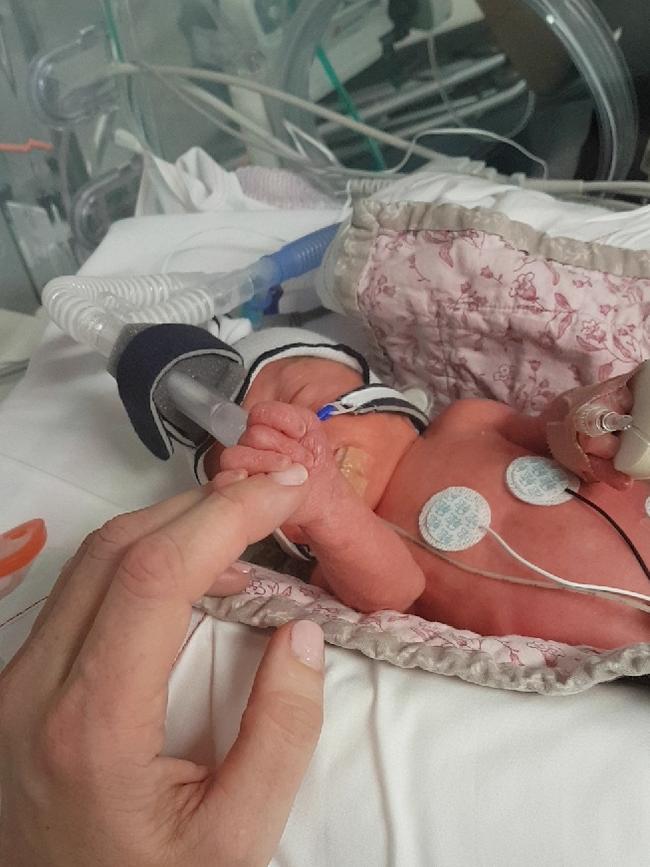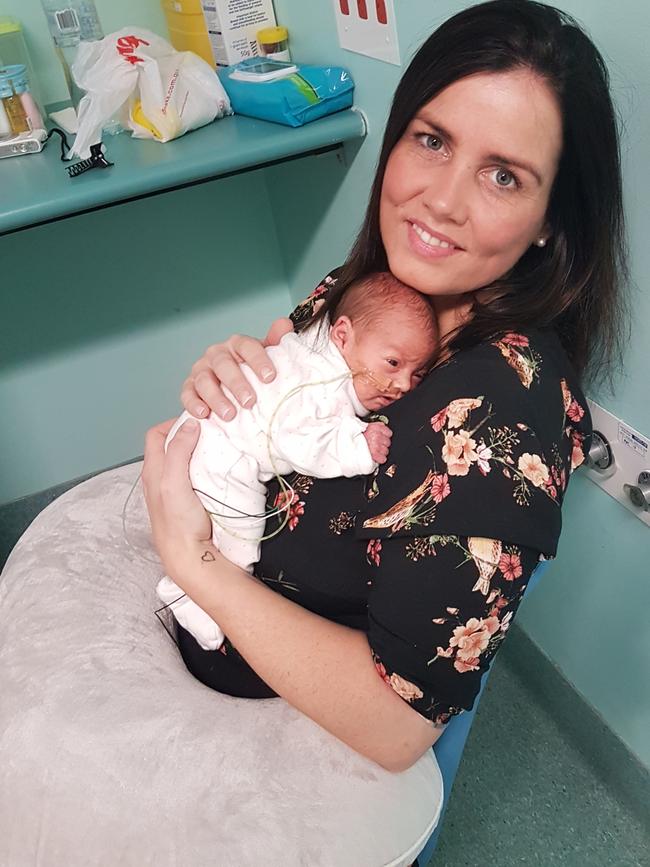New HPV-based cervical screenings to minimise invasive operations and premature births
WHILE screening and treatment may have saved Mairead Mangan from cervical cancer, it also led to the premature birth of her daughter. But all that could change thanks to a new HPV-based screening process.
NSW
Don't miss out on the headlines from NSW. Followed categories will be added to My News.
DARCEY O’Donnell’s life, like the rest of her generation, should be without cervical cancer — but it will forever be part of her story.
It is the reason she came into the world 10 weeks early and the reason she will never know her grandmother Anne Mangan.
Darcey’s mum Mairead Mangan lost her own mother to cervical cancer when she was just seven. Her mum was only 35.
Ms Mangan had regular Pap smears, one of which picked up precancerous cells and led to surgical treatment.

While the screening and treatment may have saved her from cervical cancer, which claims more than 200 lives a year, it also meant her cervix, the neck-like passage at the end of the uterus, would be weaker during pregnancy and she would be at high risk of premature birth.
Ms Mangan, 38, was ordered onto bed rest in hospital 24 weeks into her first pregnancy as a precaution.
“My cervix continued to shorten, but she came at 30 weeks,” Ms Mangan said.
Darcey weighed just 1.5kg and spent the first month of her life in hospital.
At the end of this month, she will celebrate her milestone first birthday.


The move to the new HPV-based cervical screening program, which began last December, will decrease the need for surgery like Ms Mangan’s which, in turn, will save hundreds of babies from premature birth a new study has found.
Professor Karen Canfell, Director of Research at Cancer Council NSW, has estimated that the new screening program, which starts at age 25, instead of 18, will eliminate the need for surgery in young women.
The study estimates there would be hundreds fewer preterm deliveries in Australia, up to 41 fewer per 100,000 women, and up to 52 fewer low birthweight events per 100,000 women.
“It will reduce the number of women who have that (surgery) to the cervix and therefore we will see a favourable benefit in obstetric outcomes,” Prof Canfell said.

HPV infection rates in women aged 18-24 have dropped from 23 per cent down to 1.5 per cent thanks to the vaccine. Screening now concentrates on detecting the HPV virus responsible for 99 per cent of cases of cervix cancer.
Obstetrician and former AMA President Dr Michael Gannon said the old screening system of examining cells under a microscope was never good at detecting cervix cancer in women under the age of 25 because up to 70 per cent of precancerous cells would have naturally resolved without treatment.
“We know that a lot of gynaecologists did surgery on the cervix but a good proportion did not need it as they were lower grade abnormalities, but it was one of the causes of a shortened cervix so we are likely to see less preterm birth and less prematurity, which is fabulous,” Dr Gannon said.
Darcey has done extremely well despite being 10 weeks early but prematurity is the number one cause of death and disability in children under five, Dr Gannon said.
“It is associated with increased risks of cerebral palsy, chronic lung disease, intellectual impairment, hearing impairment, blindness, learning difficulties, and behavioural problems,” Dr Gannon said.
